'Warhammer 40K: Space Marine 2' brings glory to the Emperor (review)
Space Marine 2 reminds us how good third-person action games can be.
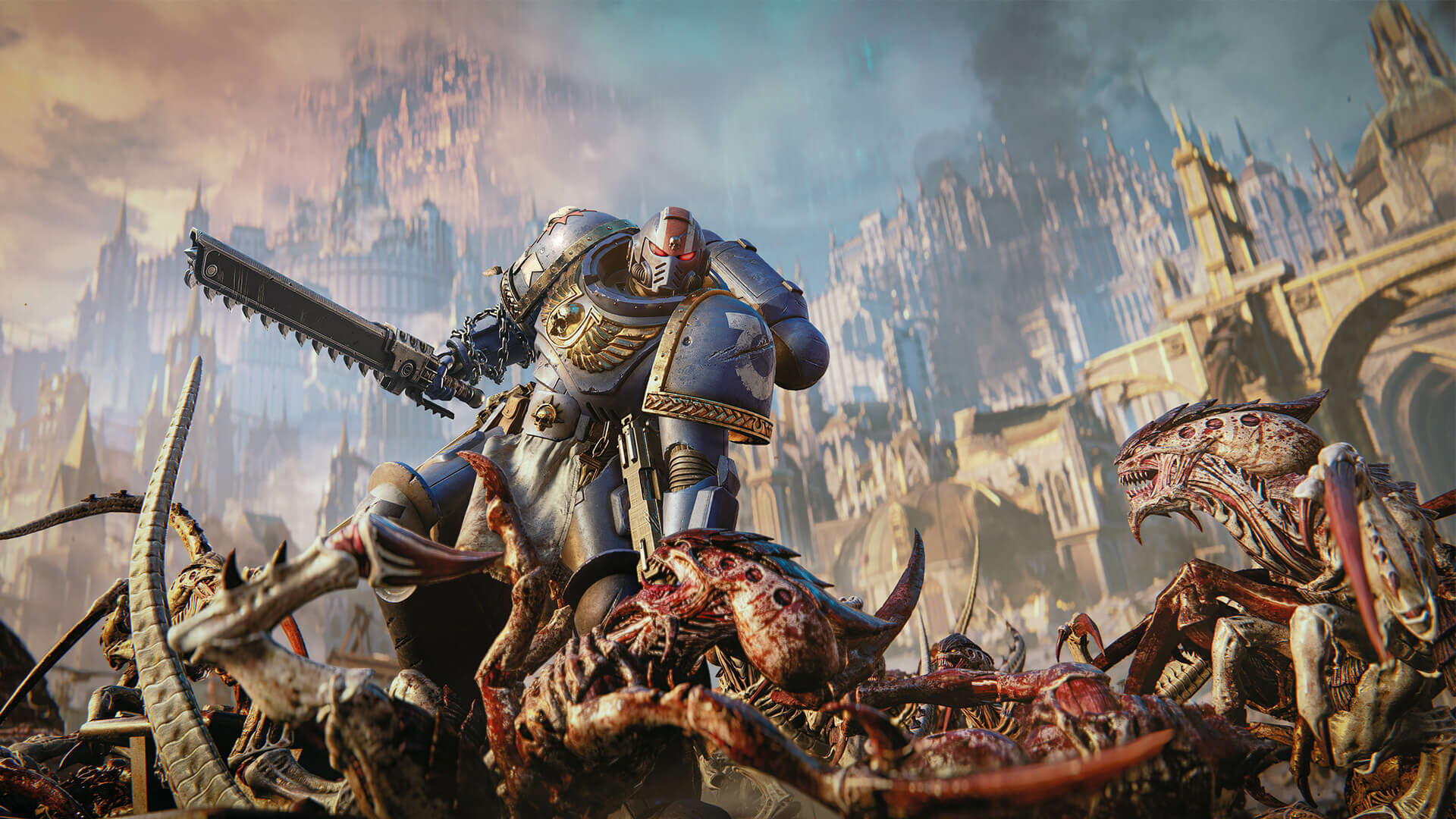
Rev up your chainswords and reload those bolters, because after 12 long years, it's time to slide into the hulking power armor of a Space Marine and crush some Xenos!
The original Space Marine came out back in 2011 and was a bit of a cult classic, which is a nice way of saying it reviewed well but nobody bought it. Still, the Warhammer 40K fanbase is nothing if not vocal, and after many years of clamoring for a sequel, our prayers to the Emperor have finally been answered and then some.
Space Marine 2 is an old-school third-person action game — the kind of thing we saw all the time during the Xbox 360 era that spawned its predecessor, but that has dropped out of favor in recent years. Having played Space Marine 2, I really can't understand why because it's bloody brilliant fun and a contender for one of the best Warhammer 40K games of all time.
Related: Want to get into Warhammer 40K? Here’s everything you need to know before playing Space Marine 2
Back in Action
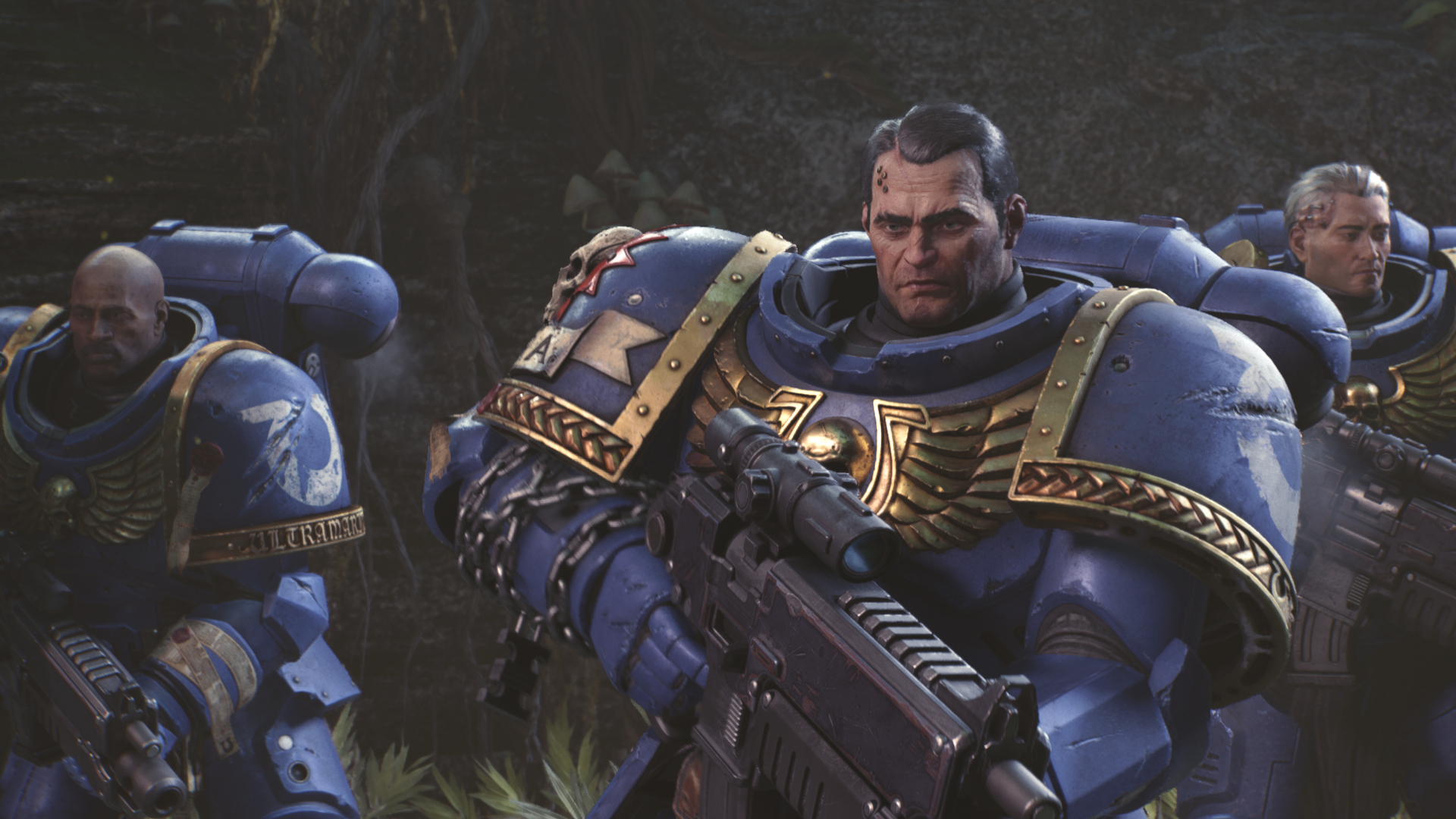
The campaign picks up a few centuries after the end of the original Space Marine (Space Marines live a very long time). Captain Titus has escaped the grasp of the Inquisition and is serving a penance in the Deathwatch. His Kill Team is deployed on planet Kadara with orders to detonate a virus bomb to delay the Tyranid Invasion.
It goes… poorly; his squad is killed and he gets a Carnifex's scything talon through his chest for good measure. Luckily, before the beast can finish the job, the Ultramarines swoop in to save the day. Titus's injuries are severe though, and the only way to save him is the "Rubicon Primaris" — basically upgrading him into an even better Space Marine. He rejoins the Ultramarines (eating a demotion down to Lieutenant), gets a new squad, and is tasked with helping to halt The Great Devourer's advance.
From there, the plot mirrors the original Space Marine, with various missions to protect key facilities and rescue important personnel before the heretical Chaos Space Marines of the Thousand Sons turn up halfway through and reveal themselves to be the real villains. While a lot of the story beats are the same, it's done in service of telling a different tale. It's a well told story, and there are enough twists and turns to keep you intrigued as to where it's heading.
Get the Space.com Newsletter
Breaking space news, the latest updates on rocket launches, skywatching events and more!
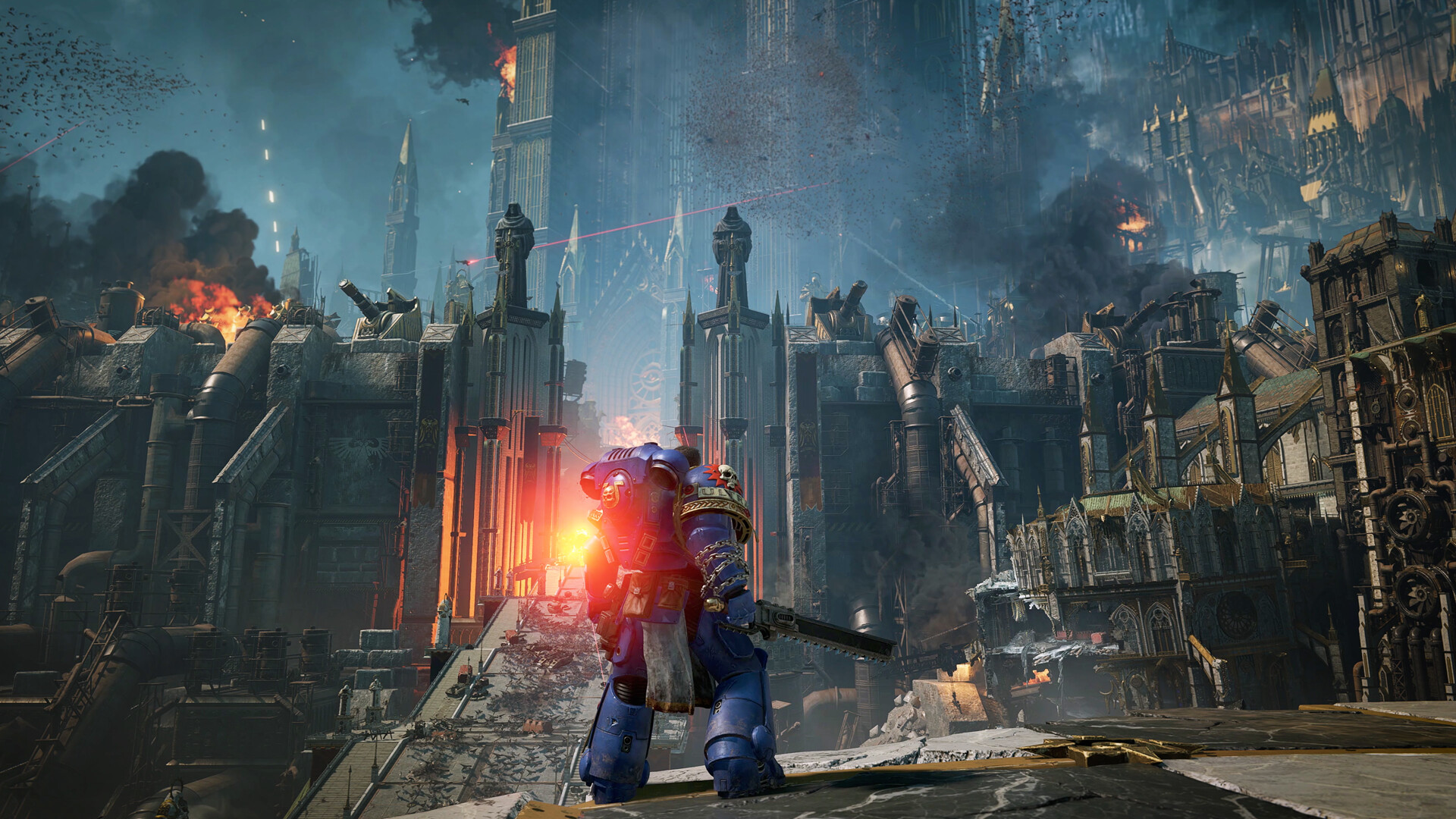
There are some nice cameos (that I won't spoil) for 40K nerds like me too. Even outside of the named characters that turn up, it's so satisfying to see the various Warhammer models brought to life in the game. I found myself wandering around with giddy glee, pointing at tanks driving past and explaining "see that's a Rhino, and that's a Predator Annihilator — you can tell it's an Annihilator because it has the Lascannons on its turret" to my far-too-patient partner. You can really tell that the developers were passionate about the universe and its lore.
Even beyond fanboying over tiny tanks brought to life, the whole game is just a sumptuous feast for the eyes. Titus, your fellow Space Marines, and the hordes of Tyranid monstrosities all look incredible, with an attention to detail that borders on heretical (note to self: send Inquisition to investigate Saber Interactive). The environments look top notch as well, offering a great deal of detail and variety — you'll travel through lush jungles, bombed-out cityscapes, and ancient mining complexes.
But the real beauty of Space Marine 2 is how it looks in motion. The animations are buttery smooth as Titus effortlessly chains together attacks, and yet somehow the immense bulk of our power-armored hero is still conveyed with each thunderous footstep and devastating blow.
And then there are the Tyranids. To properly replicate the endless swarm, developer's Saber Interactive have appropriately used their appropriately-named Swarm Engine — the one they'd previously built for World War Z. This allows them to put hundreds of chittering Hormagaunts and screeching Gargoyles on screen at once, resulting in some truly awe-inspiring moments as the tide of flesh and chitin comes barreling down on you.
Purging the xenos
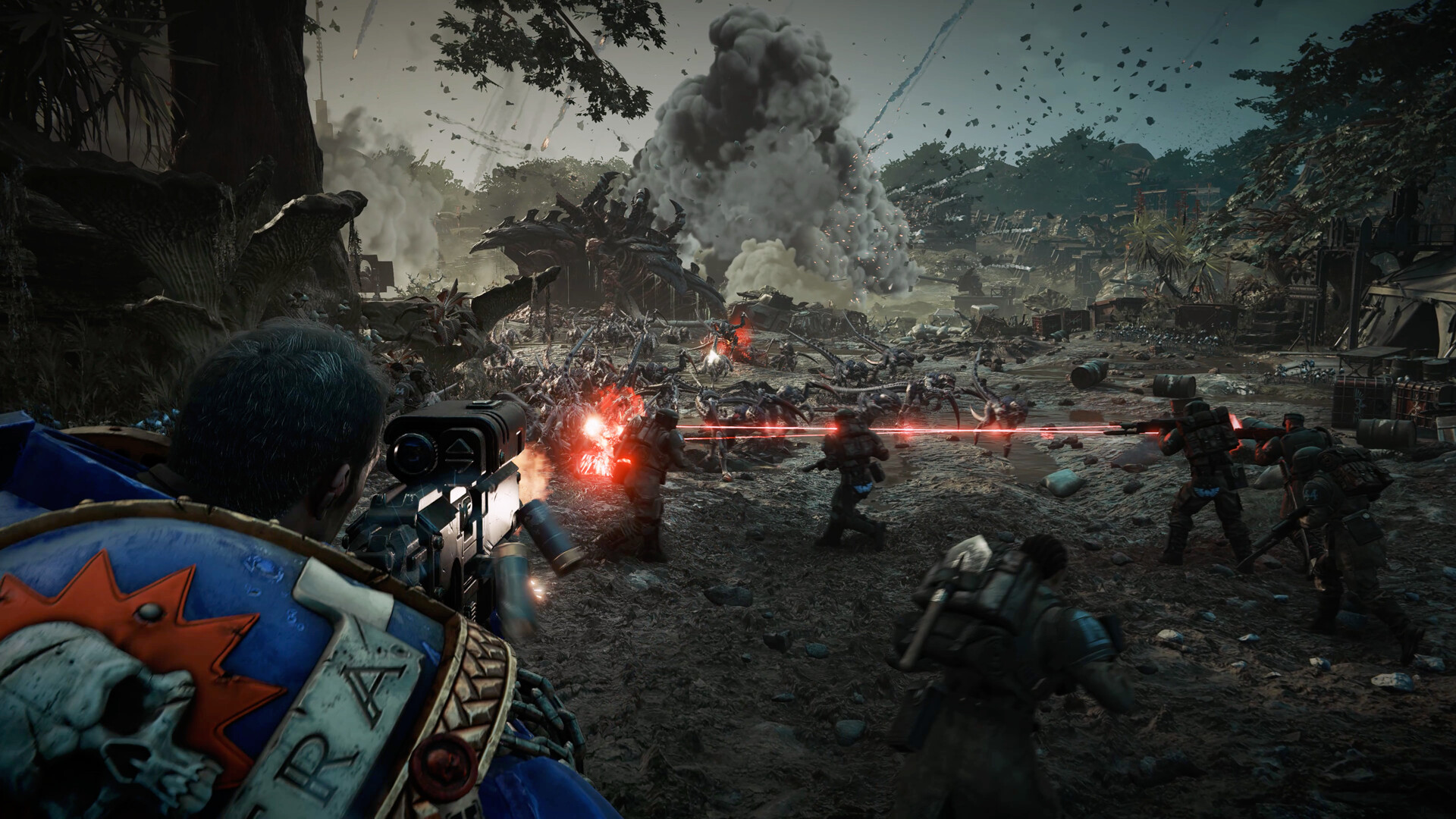
I'm thrilled to say that thinning out said hordes is a real treat thanks to a surprisingly varied combat system. On the face of it, you only have two attack buttons — shoot and melee — but the varied weapons and intuitive combo system means you get a lot out of those buttons.
On the defensive, enemy attacks can be either blocked, parried, or dodged, and choosing the right counter to your foes is key. Attacks that glow blue can be parried, opening your opponent up for a cinematic pistol shot to the face if you time it right, while red attacks can only be dodged. The difficulty comes from performing this dance of death while 50 lesser Tyranids are trying to bite your ankles off, making for an intense and unrelenting combat experience.
When you take a step back from the whirling melee and start blasting bugs at range, you'll find a diverse armory of weapons to choose from. These range from variations on the iconic bolter, to specialized tools like snipers, plasma guns, and melta rifles. There's no "right" choice here — pick the guns you enjoy and get blasting!
Executions make their glorious return here too. Get an enemy to low health and you'll open them up for an execution — a gloriously animated finishing move, usually involving Titus ripping an enemy in half. However, they've undergone a mechanical change this time around, and not for the better. Instead of recovering health, executions only recharge your armor points. Your armor doesn't last long though, so you'll be taking health damage in almost every engagement you find yourself in.
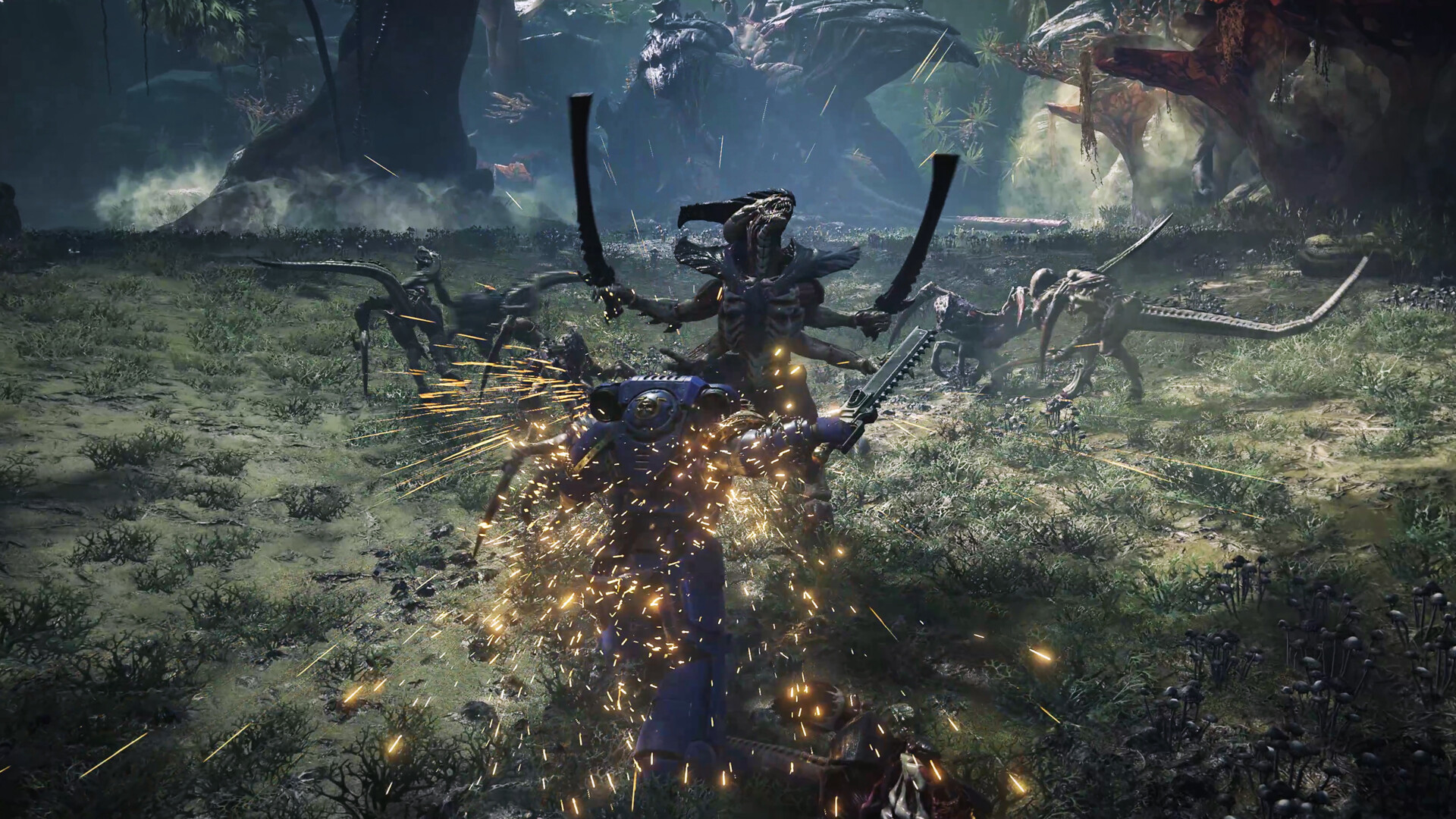
You can recover health after you lose it. Your lost sections of health turn white and you have a brief time to regain it by dealing damage without getting hit again, much like in Bloodborne.
This looks good on paper, but in reality you're getting hit so regularly that the health regeneration can't keep up.
Your only other ways to recharge your health is with the meager supply of medkits you find, and via your ultimate ability which boosts your attack and gives some health back. As a result, you spend the vast majority of the game limping around on low health, using your armor to keep yourself alive. It's not a deal breaker, but it does leave your power-armored behemoth feeling decidedly more fragile this time around.
Taking that health away from you is the vast roster of enemies, broadly split into three categories: scrubs, real threats, and bosses. The scrubs comprise of things like Tyranid hormagaunts and chaos cultists — useless on their own, but a threat in large numbers, especially when backed up by the real threats. These are your Tyranid Warriors, Raveners, and Rubric Marines who require some real effort to put down. These are the guys you'll need to focus on, testing your mastery of the dodge/parry/block triangle.
Finally, there are an array of bosses you'll encounter across both the campaign and operations mode (we'll get to that). Here we get our Dark Souls on, as it’s all about learning the attack patterns of each boss and figuring out when you can afford to get a few cheeky thunder hammer bonks in.
Smooth operator
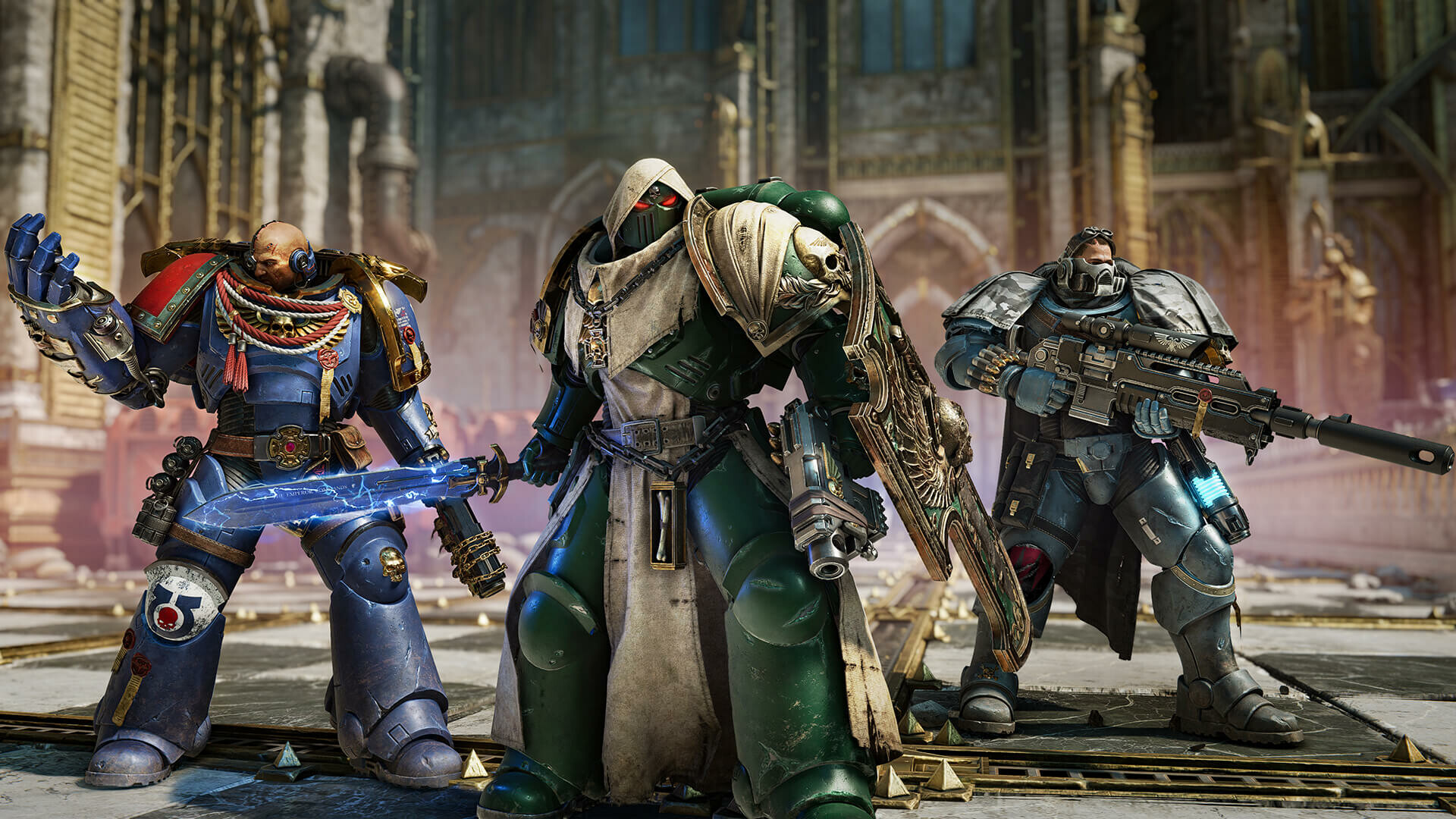
Alongside the main story, there is also an Operations mode which serves as the main co-op offering (alongside the campaign itself, which can also be played in three-player co-op). Throughout the campaign, Titus will ask another squad to do various things — Operations is where you see how these missions went down and, honestly, it's where you'll spend most of your time.
It's basically a second campaign, but with a progression system. Here you can unlock better equipment and level up your different Space Marine classes, allowing you to venture into higher difficulties for even greater rewards. The missions are just as good as those found in the main story, even introducing a boss that Titus never gets to face.
Extra content is promised here, including new missions and weapons, yet it remains to be seen how much replay value it has. For my part, I enjoyed playing through it and will likely do a couple more runs with friends.
There is only war
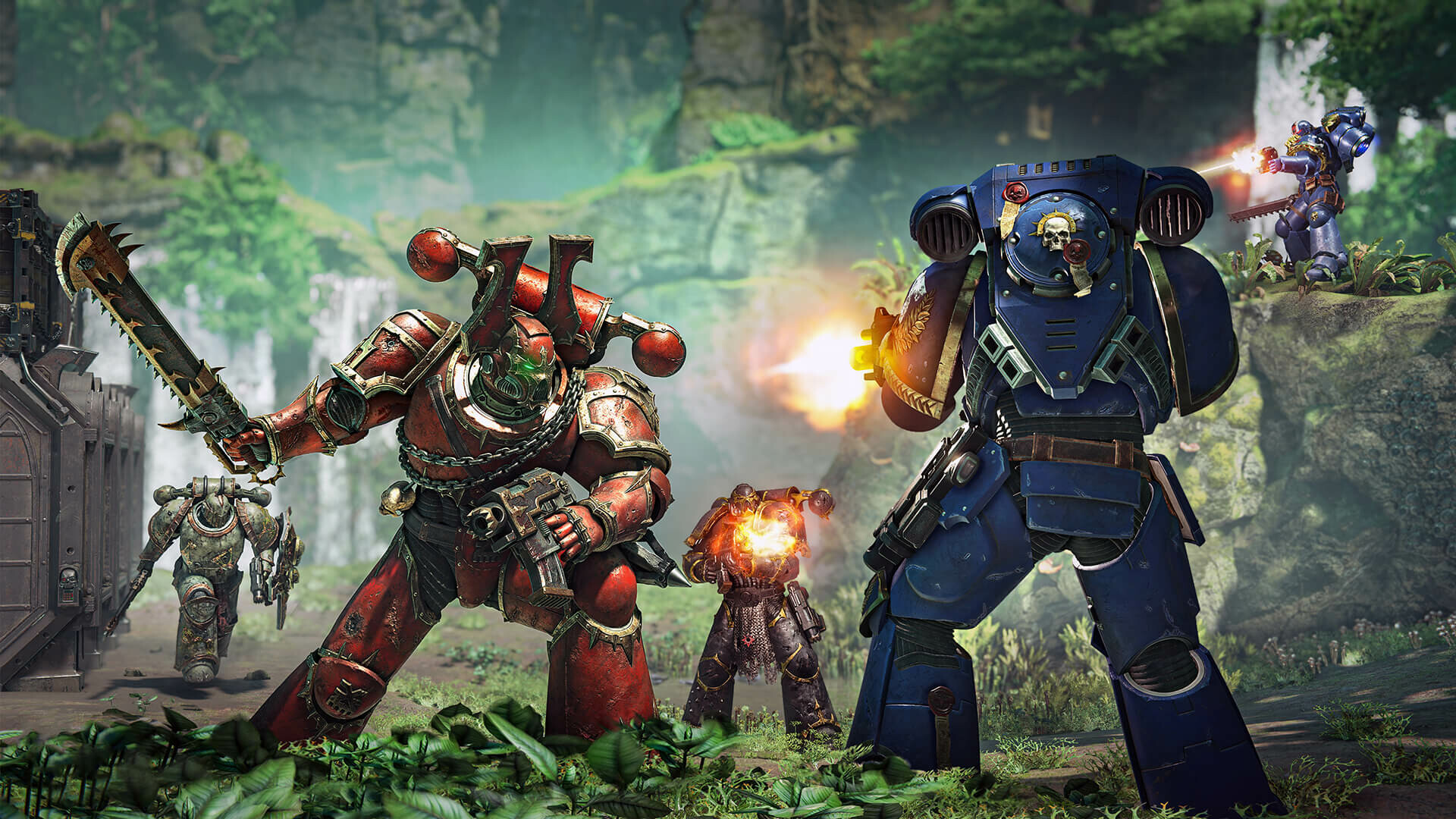
There is also a competitive multiplayer option called Eternal War, which pitches teams of six loyalist Space Marines against six villainous Chaos Space Marines across a couple of match types. You can choose between a variety of classes with different abilities and weapons, all with their own unlock paths for you to progress through. The slow movement and high time-to-kill means that it's a very tactical affair, as you can't easily flee from a fight that's going poorly.
I've enjoyed my time with it, although the team balancing could definitely use some work as it consistently seems to throw teams of high level players against newbies, with predictable results. It doesn't reshuffle the teams between rounds either, so if you're getting creamed, you're going to stay creamed. Overall, it's a fun little distraction, but the wealth of PvE content means that it'll likely fall by the wayside for most players.
The word of the Emperor!
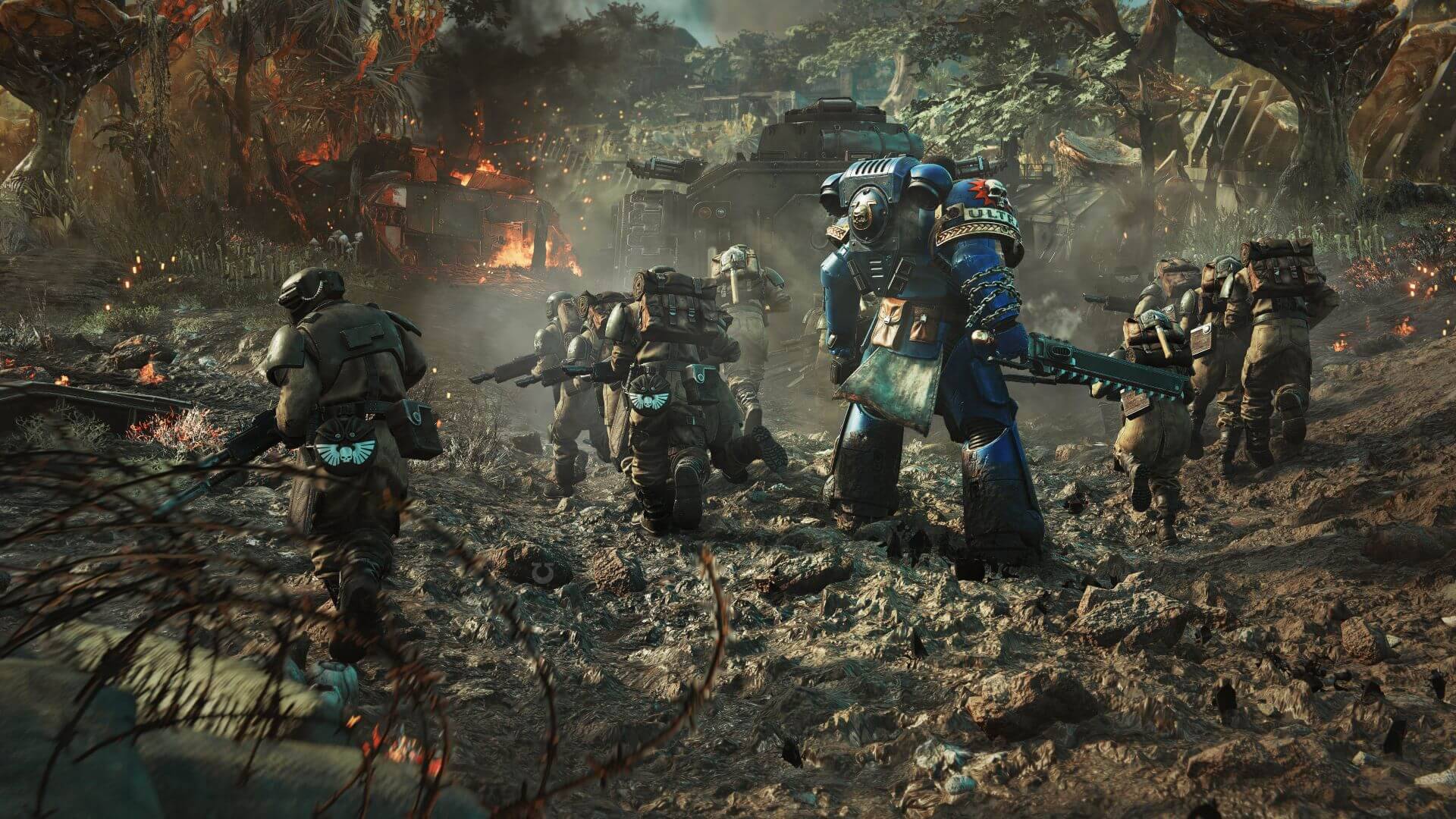
Space Marine 2 is an absolute blast, and definitely one of the best Warhammer games that I've ever played. Hell, it's one of the best games I've played this year, full stop. There are some niggling issues, and the longevity of its supplementary game modes remains to be seen, but for now this is a must-play for sci-fi action fans.
Space Marine 2 is available to buy now for Xbox Series X|S, PlayStation 5, and PC. if you want to check out some other excellent games set in the grim darkness of the 41st millenium, check out our coverage of Warhammer 40K: Boltgun and Warhammer 40K: Chaos Gate – Daemonhunters too.
Join our Space Forums to keep talking space on the latest missions, night sky and more! And if you have a news tip, correction or comment, let us know at: community@space.com.
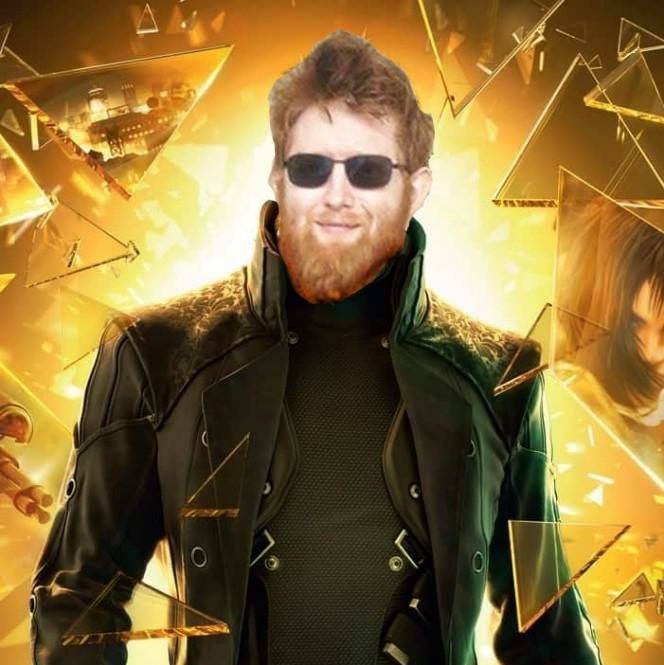
Ian is the Entertainment Editor at Space.com, covering movies, TV series, and games in the space and sci-fi realms. He's a massive sci-fi nerd and has been writing about games and entertainment for over eight years, with articles on sites like Space, LiveScience, GamesRadar, and more. With a degree in biology, a PhD in chemistry, and his previous role at the Institute of Physics Publishing, Ian is taking a world tour through the different scientific disciplines.









